The Need To Move On
Like many photographers, I am also faced with the dilemma of coming to terms with the recent and continuing price increases of film for photography. While many struggle with the need to move on with changes to their routines and workflow strategies, with some resorting to using bulk load film, do-it-yourself film processing, and doing negative scanning on personal scanners, I struck these notions off my list and went instead to look at alternatives.
One solution that I ended up with, which seems to be very feasible and one that may lead to an exciting outcome, is to go beyond the memories and nostalgia of the printed image and flip over instead, to the other side of the coin, to have a closer look at film-like emulations. This I can do by switching over from 35mm SLR film camera bodies to vintage digital SLR camera bodies fitted with CCD sensors.
The CCD Sensor
The CCD, as we know it, was the standard for camera sensors from the early 80s till the late 2000s before they were phased out and replaced with the CMOS variety, based partly on the economics of production, matching performance, and product development. Not all is lost, though; CCDs are still the preferred sensor in areas of specialized photography such as Optical Microscopy, Space Photography, and Near-infrared imaging.
On their own, CCDs were acknowledged as having superior image capture capabilities with their higher quality low-noise images, better homogeneity with colors that appear brighter with more pop, with some finding them more realistic to the eye and almost film-like. CCD images, however, may tend to suffer from smearing and blooming effects when overexposed.
It's Vintage
Vintage digital cameras with CCD sensors, from compacts and super compacts, travel zooms, and digital bridges, to the ubiquitous SLR, produced mainly from 10 to 15 years ago with technology that has been bypassed and considered redundant, are still readily available from used and auction markets, some still in the original packing, hardly used spick and span condition, or mint and near-mint.
With prices for the asking and selections readily available, the economics include a non-recuring cost (as you are doing away with the cost of buying and developing the film roll), and with little or no change to current workflow peripherals, the cameras are all there for you to pick and choose from. Inadvertently, these cameras are also younger and newer in terms of production years when compared to most 35mm SLR film cameras we see today, and may outlast the predecessors in terms of potential use.
Lens Compatibility, Managing the Move
Lens compatibility, or the ability to adapt lenses used previously on 35mm SLR film cameras, is an important aspect to look at when considering the economics of the move. This is not much of a problem as major brands like Canon, Nikon, Pentax, and Sony do build their digital bodies based on the latest technology and electronic functionalities (and the lens mount system), of preceding film camera bodies.
Aside from sharing similar lens mount and the adaptability of using 35mm SLR film camera lenses on early model digital SLR cameras, both camera genres do tend to have similar exposure and other functionalities as well. These may include a built-in camera flash, programmed (PASM) exposure modes, wide-area focus points, honeycomb-matrix or other evaluative autofocus features, fast AF speed, and an LCD panel display.
Selection, Recommendation
I did my share of the hunt-and-search, buying-and-testing (mostly from the low end of the cost spectrum), and have ended up now with about a dozen or so models, ranging from super and ultra compacts, digital bridges, and of course, the ubiquitous digital SLRs.
And while waiting for the like of the acknowledged Olympus E-400 or E-500 to come along, which will definitely add to the pride and prestige of my CCD digital camera collection, here's a list of 3 (three) digital SLR cameras that are worth looking at:
Nikon D200
The professional workhorse from Nikon, the Nikon D200, launched in 2006, has a 10.2MP APS-C CCD sensor, a magnesium alloy chassis, weather-sealed body, 11/7 AF area modes, 3D Color Matrix Metering II, ISO sensitivity from 100 to 1600 (Up to ISO 3200 with boost), a shutter speed range from 30 to 1/8000 second, a 230,000 pixel 2.5-inch TFT LCD, operates in Program, Shutter priority, Aperture priority, and Manual modes, and captures images in JPEG and (NEF) RAW<. Images are recorded on CF cards.
Based on the menu system of the DX2, the D200 is also complemented with a very comprehensive array of function sets for Playback, Shooting, CSM (custom menus), and setup. Modifications to the Shooting or Custom Settings Menu (CSM for short) are saved to one of the four (4) Shooting Menu Banks, initially named A, B, C, and D. Aside from the bright, sharp, and smooth LCD monitor, the D200 has a display panel on the right of the top panel for photographic and digital camera settings.
The two AF area modes, an 11-area Normal Zone and a 7-area Wide Zone, are selectable from the AF-area mode switch on the lower back of the camera. In Normal Zone mode, focus selection can be done from any one of the eleven areas, and the camera will focus on the center of the selected area, while in Wide Zone mode, the focus is selected from any one of seven areas that cover a wider area of the frame, useful for focusing on the general area of a moving subject.
The D200 is also fitted with an AI aperture ring connector, which supports A/M modes and metering with older AI manual focus lenses manufactured from 1977, and features an intervalometer for time-lapse photography. The camera has a hefty body weight of 830 grams without a battery, memory card, body cap, or monitor cover. Power is sourced from a Nikon EN-ELe3 Lithium battery pack.
Nikon D80
Coming from an affordable and popular enthusiasts digital SLR series, the Nikon D80, launched in 2006, came with a 10.2MP APS-C CCD sensor, an image processing engine similar to the D200/D2X, 11 area AF system, 3D Color Matrix Metering II, ISO sensitivity from 100 to 1600 (Up to ISO 3200 with boost), mechanical only shutter with a maximum top speed of 1/4000 second, a 230,000 pixel 2.5-inch TFT LCD, programmed shooting modes, and features to help enthusiasts get the better of the camera. Images are recorded on SD-HC cards.
Exposure modes on the D80 include Program AE, Manual, Aperture Priority, Shutter Priority, and Vari-program scene modes which include Auto, Portrait, Landscape, Close-up, Sports, Night landscape, and Night portrait. Another cue taken from the Nikon D50 is the AF-A mode, which automatically switches from AF-S (single autofocus) to AF-C (continuous autofocus) if subject movement is detected. An LCD control for the display of photographic and digital settings is on the top right of the camera.
The D80 is also fitted with the standard Nikon 'F' lens mount, complete with the AF screw drive mechanism, which means that you can use the camera with almost all F Mount Nikkor lenses including G- and D-type AF Nikkors. Missing, however, is the 'Non-CPU Lens Data' menu and the aperture-indexing finger that is used to enable full-aperture metering with older 'AI' lenses. When used with these old-school manual focus lenses, metering on the D80 is stop-down. The Nikon D80 does not have a sensor-based image stabilization system either
The professional-grade Nikon D200, the enthusiast-grade D80, and the entry-level D3000 were the final models of Nikon digital SLR cameras that are fitted with CCD sensors. While enthusiasts may opt for the D300 for the move from analog to CCD, the D300 is not fitted with the autofocus screw-drive mechanism, which will make it redundant for the camera to be used with older AI autofocus lenses.
Pentax K-m Digital (K2000)
The Pentax K-m (K2000 in the US), launched in 2009, is a compact entry-level digital SLR camera fitted with a Pentax KAF2 lens mount, has a 10.2MP APS-C CCD sensor, a stainless steel chassis with plastic body, 5-area AF mode, TTL open-aperture 16-segment metering, ISO sensitivity from 100 to 3200, a shutter speed range from 30 to 1/4000 second, CCD shift image-stabilization, a 230,000 pixel 2.7-inch TFT LCD, programmed shooting modes, custom-programmable functions, and other user enhancement features. Images are recorded on SD/SDHC cards.
The camera is powered by a set of 4x AA (Alkaline, NI-MH, or Lithium) batteries and is fitted with the KAF2 lens mount, which was designed for use with Pentax DA-L-series lightweight kit lenses. The KAF2-mount was part of Pentax's development sequence for adding auto-focus features to its lenses. The first KA-mount, for example, allows the lens's aperture to be set by the body, which enables shutter priority and program auto exposure modes.
Exposure modes on the K-m include a pre-set section for Auto Picture, Portrait, Landscape, Macro, Moving Object, Night Scene Portrait, and Flash Off, and the programmable section with the P (Program AE), Sv (Sensitivity Priority), Tv (Shutter Priority), Av (Aperture Priority) and M modes. A sub-menu section with pre-sets for Night Scene, Surf & Snow, Food, Sunset, Stage Lighting, Kids, Pets, Candlelight, Museum, and Night Snap modes is also available.
The Pentax K-m works just as well when fitted with K-mount SMC Pentax-A lenses. With the lens set to the "A" setting, the camera will control the lens aperture opening automatically. When fitted with a manual focus lens, the initial display of the LCD panel is a request to input the focal length of the mounted lens. I tried that recently with the SMC Pentax-A 35-70mm 1:4 and found that the preferred setting for the focal length setting is 50.


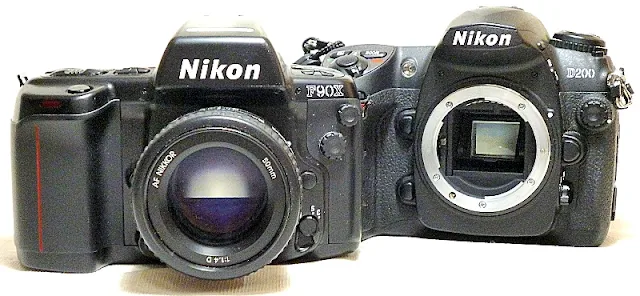

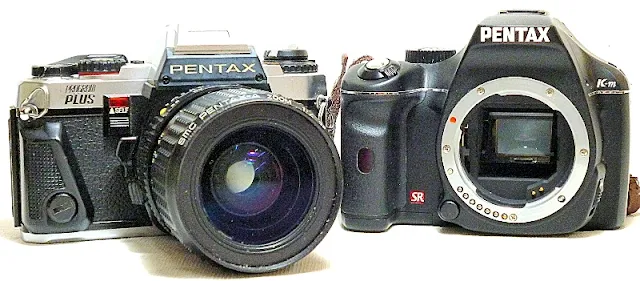


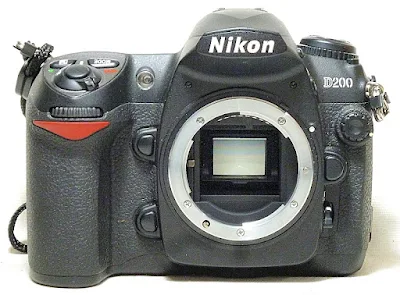







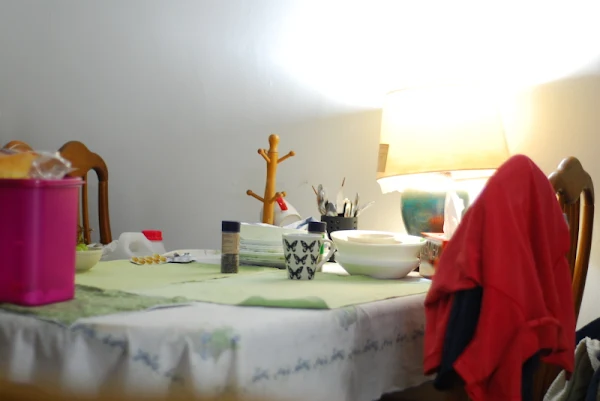

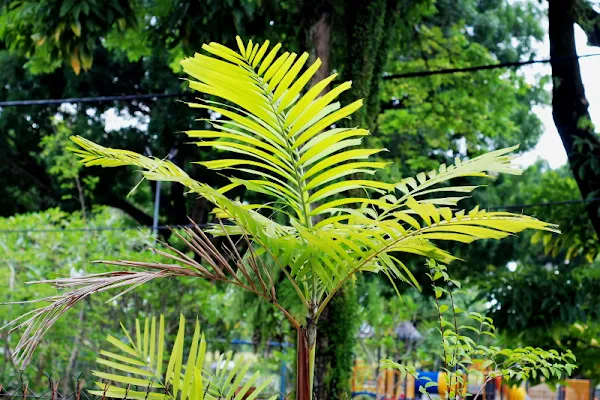
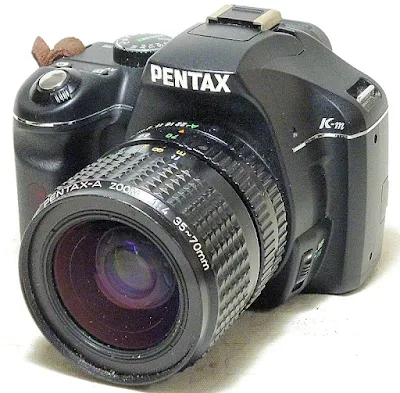
















No comments:
Post a Comment